The timeless appeal of a kitchen featuring dark countertops and light cabinets lies in its striking visual contrast. This classic combination creates a balanced and sophisticated aesthetic that suits a wide range of design styles, from modern minimalist to rustic farmhouse. The light cabinets, whether crisp white, soft cream, or light gray, make the space feel bright and open, while the dark countertops provide a grounding focal point, adding depth and a touch of drama. This versatile pairing allows for endless creativity with backsplashes, hardware, and accessories, making it a consistently popular choice for homeowners seeking both elegance and functionality.
1. Black Granite Countertops with White Shaker Cabinets

A classic pairing that never goes out of style involves combining polished black granite countertops with crisp white Shaker cabinets. The natural specks and veining within the granite add subtle texture and character, preventing the surface from appearing flat. This creates a high-contrast look that feels both clean and dramatic. The simplicity of Shaker-style cabinet doors provides a perfect, uncluttered backdrop, allowing the luxurious granite to become the kitchen's centerpiece. This combination is incredibly versatile, fitting seamlessly into traditional, transitional, and contemporary designs. It establishes a strong visual foundation that can be complemented by various hardware finishes and backsplash materials for a personalized touch.
2. Dark Soapstone Countertops with Cream Cabinets

For a softer, more historical appeal, consider pairing dark, moody soapstone countertops with warm cream-colored cabinets. Unlike the starkness of pure white, cream cabinets offer a gentle, inviting glow that complements the velvety, matte finish of soapstone. Soapstone is a natural stone that develops a unique patina over time, adding a layer of lived-in character to the kitchen. This pairing is ideal for farmhouse, cottage, or traditional kitchen designs where a sense of warmth and authenticity is desired. The subtle white veining often found in soapstone ties in beautifully with the creamy cabinetry, creating a cohesive and elegant look.
3. Dark Quartz Countertops with Light Wood Cabinets
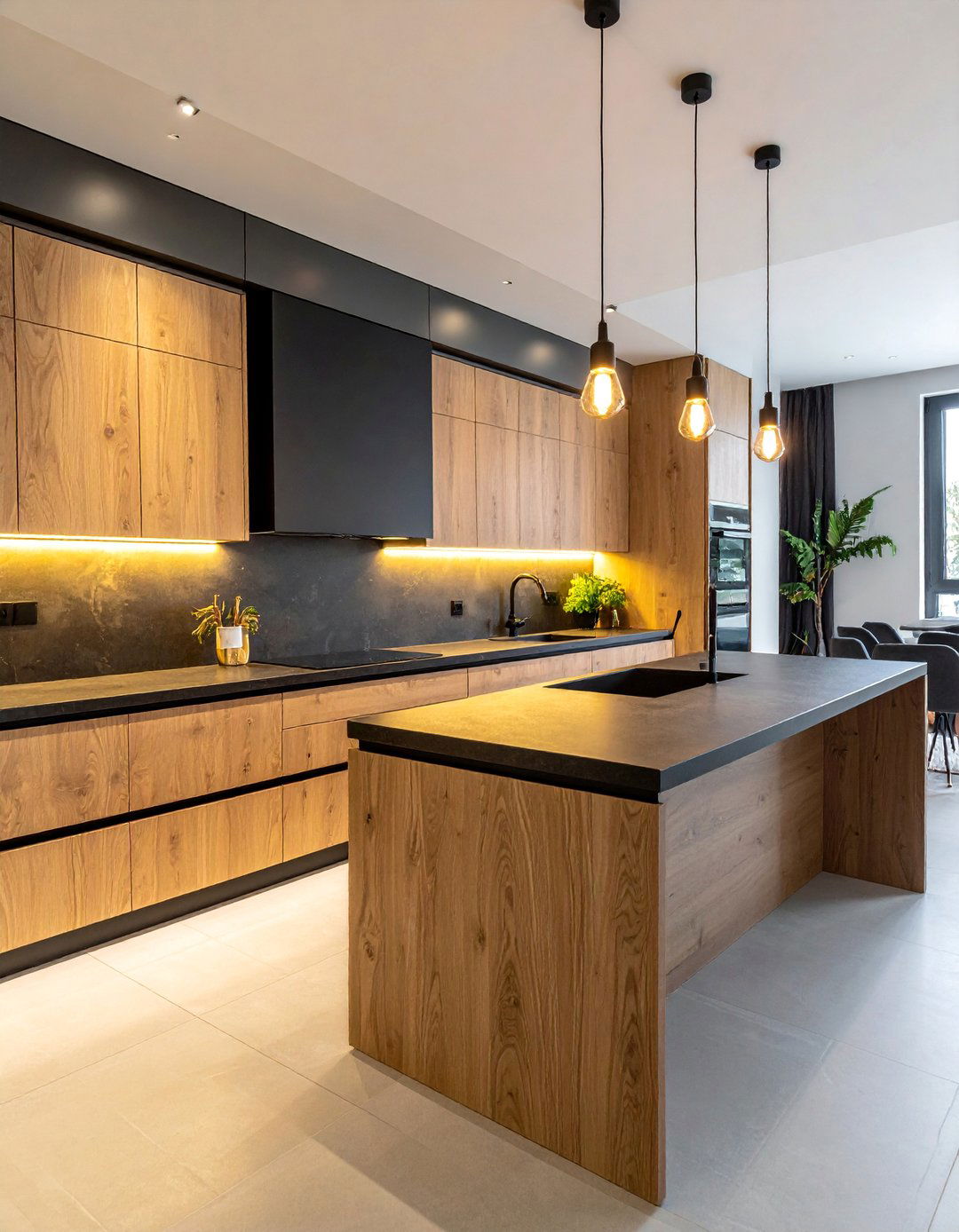
To introduce natural warmth and texture, pairing dark quartz countertops with light wood cabinets is an excellent choice. The sleek, uniform appearance of dark quartz—whether in a solid black, charcoal, or deep brown—creates a modern, clean surface that contrasts beautifully with the organic grain of light wood like oak, maple, or birch. This combination bridges the gap between contemporary and natural design elements, resulting in a space that feels both sophisticated and welcoming. The durability and low-maintenance nature of quartz make it a practical option, while the light wood cabinets keep the overall atmosphere bright and airy, avoiding a heavy or dated feel.
4. Marble-Look Quartz with Dark Veining and Off-White Cabinets
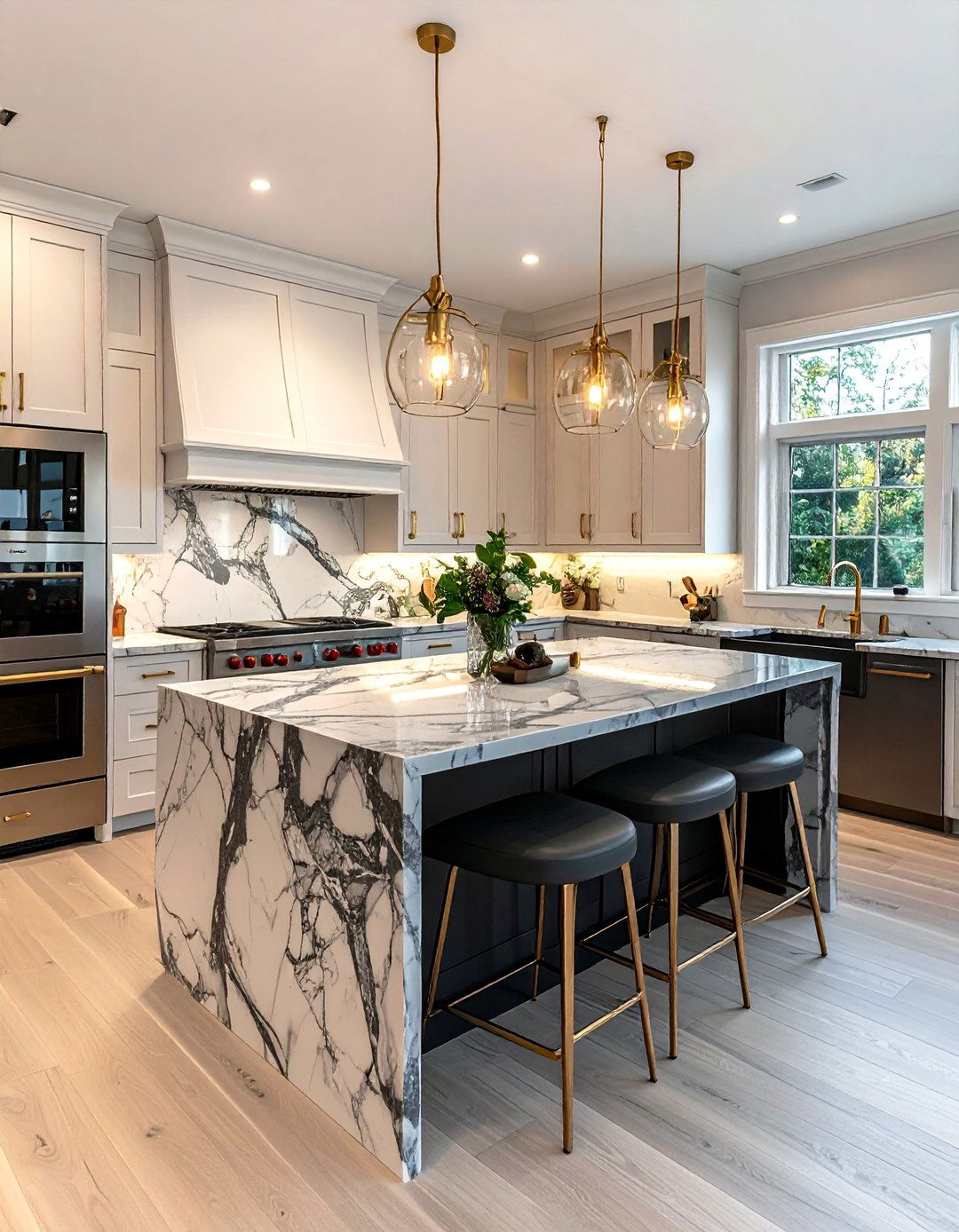
Achieving the luxurious look of marble without the maintenance is possible by using marble-look quartz that features a light base with dramatic, dark veining. When paired with off-white cabinets, this creates a sophisticated and cohesive design. The dark veins in the quartz countertop echo the depth of a solid dark surface while maintaining an overall bright appearance. Off-white cabinets provide a subtle warmth that prevents the space from feeling sterile. This elegant combination works exceptionally well in transitional and contemporary kitchens, offering a timeless aesthetic that feels both high-end and inviting, with the prominent veining acting as a stunning visual centerpiece.
5. Matte Black Countertops with Light Gray Cabinets

A modern, understated, and incredibly chic look can be achieved by pairing matte black countertops with light gray cabinets. The non-reflective finish of the matte countertops absorbs light, creating a soft, velvety texture that feels sophisticated and contemporary. Light gray cabinets provide a subtle contrast that is less stark than pure white, resulting in a balanced and serene atmosphere. This monochromatic-inspired palette is perfect for minimalist or Scandinavian designs, where clean lines and muted tones are celebrated. The combination allows other elements, like metallic hardware or a vibrant backsplash, to stand out while maintaining an overall sense of calm elegance.
6. Contrasting Kitchen Island with a Dark Countertop
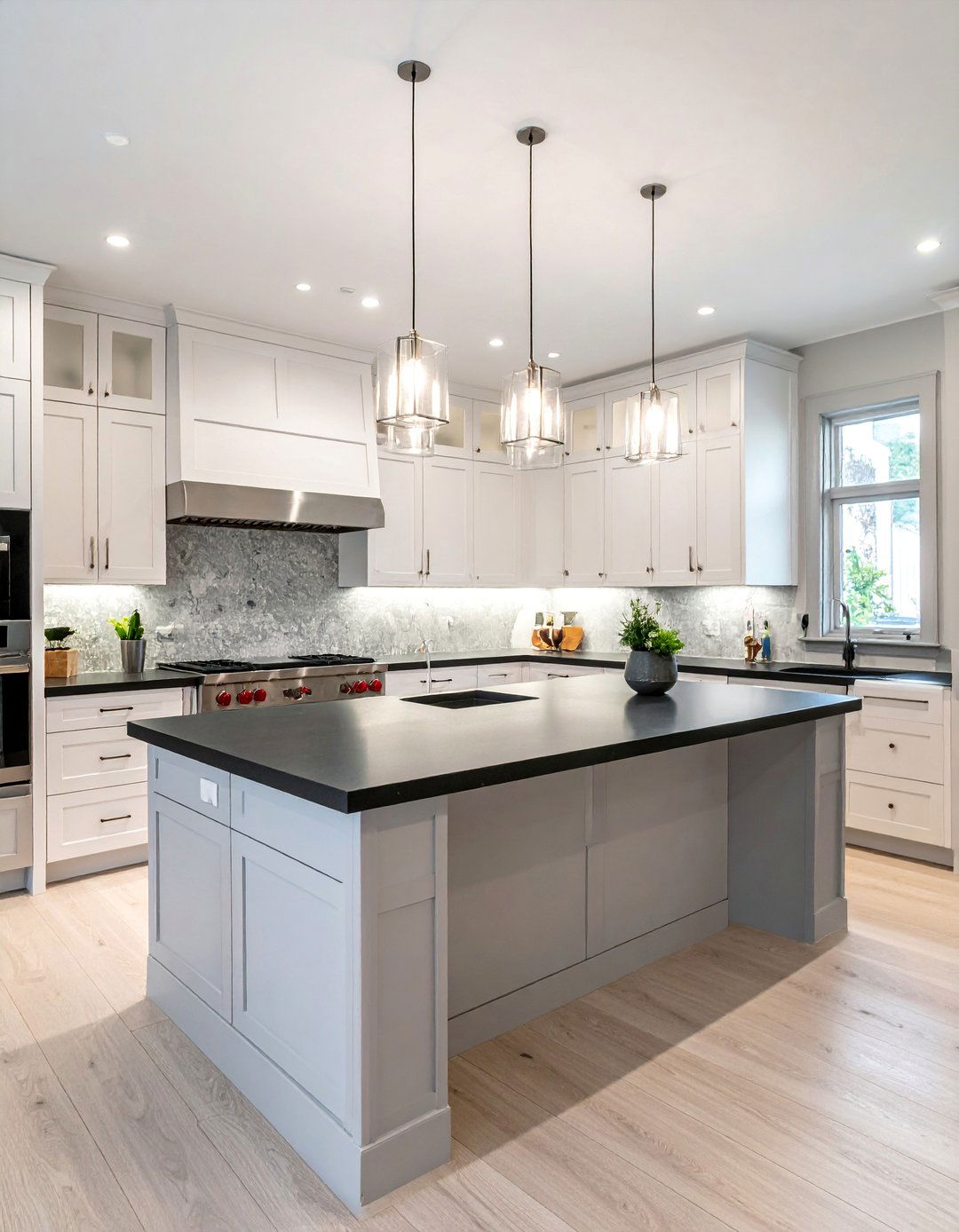
To create a powerful focal point, design a kitchen island that contrasts with the surrounding cabinetry. A common approach is to have a light-colored island base, such as white or light gray, topped with a striking dark countertop like black granite or quartz. This island then stands out against perimeter cabinets that are also light-colored but may have a different countertop. This design choice anchors the room and clearly defines the island as a central hub for cooking and socializing. It adds visual interest and breaks up the monotony of a single cabinet color, providing a custom, high-end feel without overwhelming the space with dark surfaces.
7. Waterfall Edge Dark Countertop with Light Cabinets
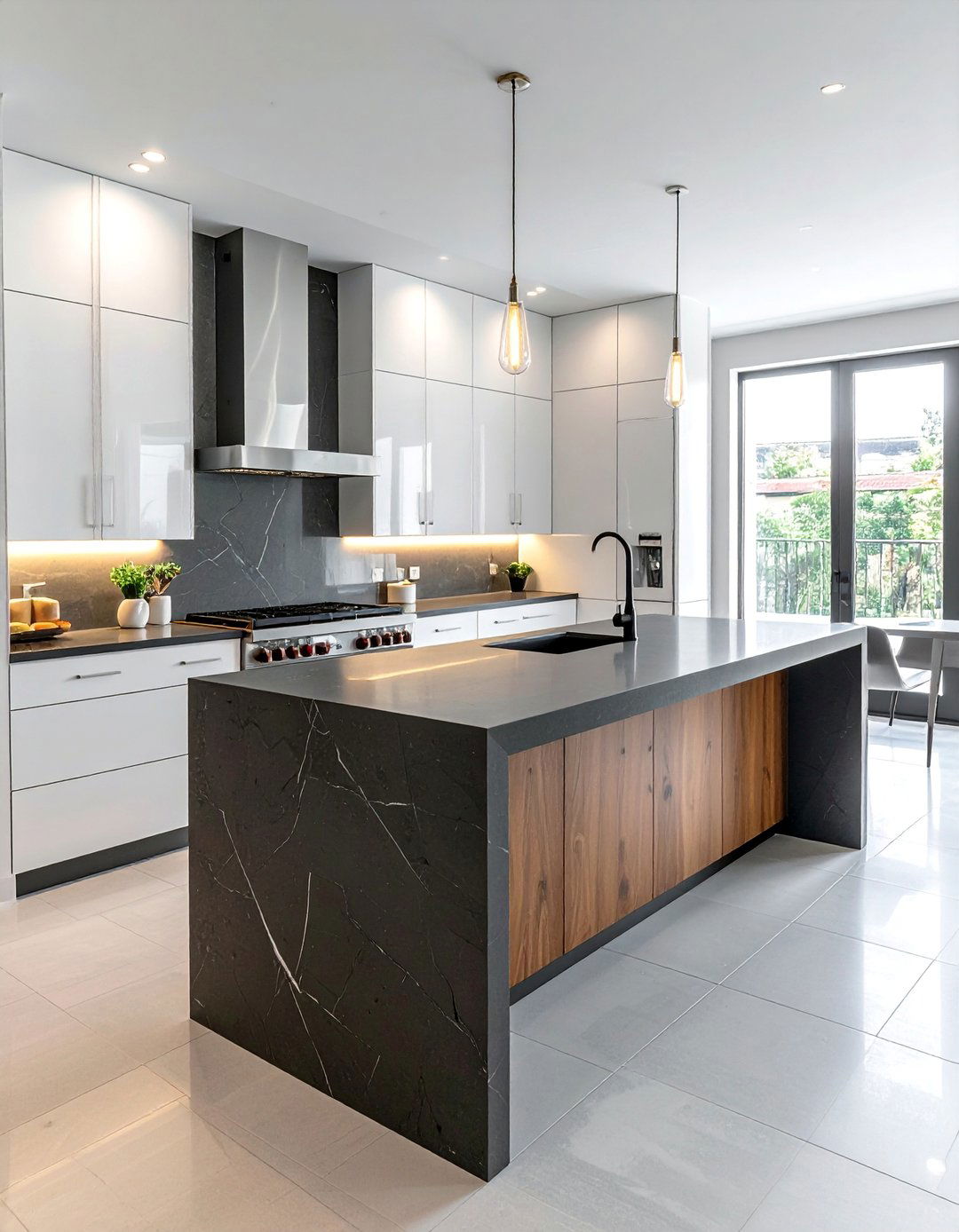
For a touch of modern luxury, a waterfall edge on a dark countertop makes a dramatic statement, especially when framed by light cabinets. In this design, the countertop material extends vertically down the sides of an island or cabinet run, creating a continuous flow of the dark, rich surface. This technique highlights the beauty of the countertop material, turning it into a sculptural feature. Paired with minimalist light-colored, flat-panel cabinets, the waterfall edge becomes the undeniable star of the kitchen. It’s a bold choice that speaks to contemporary aesthetics and adds a sleek, high-end architectural element to the room.
8. A Farmhouse Sink with Dark Countertops
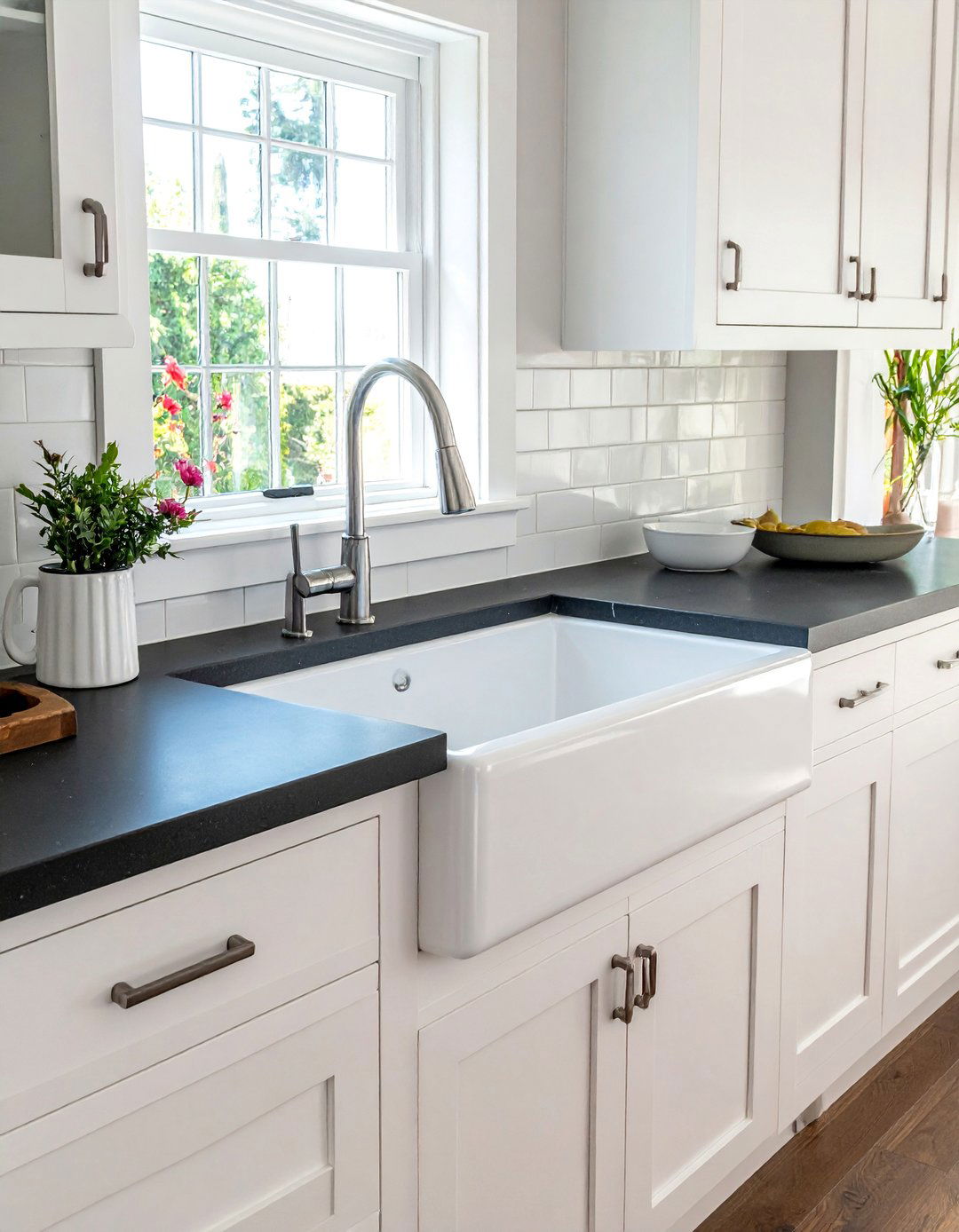
Integrating a classic farmhouse sink, typically in white porcelain or fireclay, creates a charming contrast against dark countertops. The deep, wide basin of the sink stands out brightly against the rich black, charcoal, or dark brown surface, reinforcing a modern farmhouse or transitional aesthetic. This combination beautifully marries rustic charm with sleek sophistication. The crisp white of the apron-front sink breaks up the dark expanse of the countertop, adding visual relief and a distinct focal point. It’s a practical and stylish choice that enhances the functionality of the workspace while contributing significantly to the kitchen's overall character and appeal.
9. Gold Hardware Accents on Light Cabinets
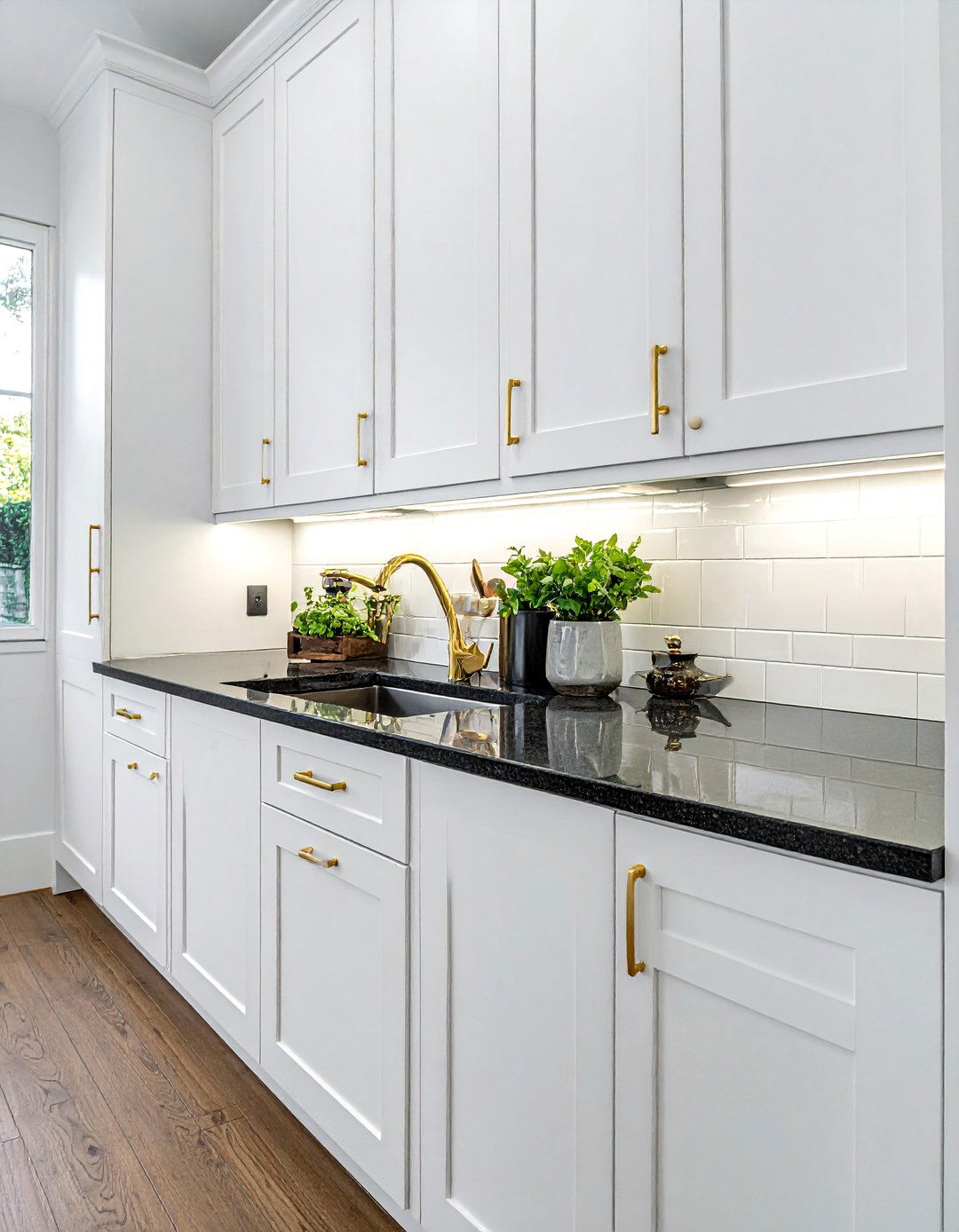
When paired with dark countertops and light cabinets, gold or brass hardware can elevate the kitchen's design from simple to stunning. The warm, reflective quality of gold handles, knobs, and pulls pops against the backdrop of white or cream cabinets, adding a touch of glamour and sophistication. This metallic accent acts as jewelry for the cabinetry, bridging the visual gap between the light cabinets and dark countertops. The warmth of the gold complements the richness of the dark surfaces, creating a cohesive and luxurious look that feels both timeless and on-trend, suitable for a wide range of styles from classic to contemporary.
10. Wood Accents and Open Shelving

Introducing wood accents, such as open shelving, is a fantastic way to soften the high contrast between dark countertops and light cabinets. Natural wood shelves bring warmth, texture, and an organic element to the space, preventing it from feeling too stark or clinical. These shelves can be used to display curated dinnerware, glassware, or decorative items, adding a personal and lived-in touch. The wood tone connects with other potential elements like hardwood flooring or a butcher block island, creating a harmonious and balanced design. This strategy adds functional storage while enhancing the kitchen’s visual appeal with a layer of rustic or Scandinavian charm.
11. Patterned Backsplash with Dark Countertops

A patterned backsplash is an excellent opportunity to inject personality and visual interest into a kitchen with dark countertops and light cabinets. With the cabinets and countertops creating a strong, neutral foundation, a dynamic backsplash with a geometric, floral, or encaustic-style tile can become a captivating focal point. Choose a pattern that incorporates colors from both the light cabinets and dark countertops to create a cohesive look. This design choice ties the entire color scheme together, breaking up the solid blocks of color and adding a layer of texture and movement that elevates the kitchen from classic to truly unique and stylish.
12. Dark Countertops in a Modern Minimalist Kitchen

In a modern minimalist kitchen, the pairing of dark countertops and light cabinets emphasizes clean lines and an uncluttered aesthetic. Opt for flat-panel light cabinets with no visible hardware for a seamless look. The dark countertop, perhaps a honed black quartz or granite, provides a stark, grounding contrast that is fundamental to minimalist design. This combination creates a powerful graphic statement without needing extra ornamentation. The focus remains on the purity of form and the interplay between light and dark planes. This approach results in a space that feels intentional, sophisticated, and elegantly simple, embodying the core principles of minimalism.
13. Traditional Kitchen with Dark Granite and Antique White Cabinets
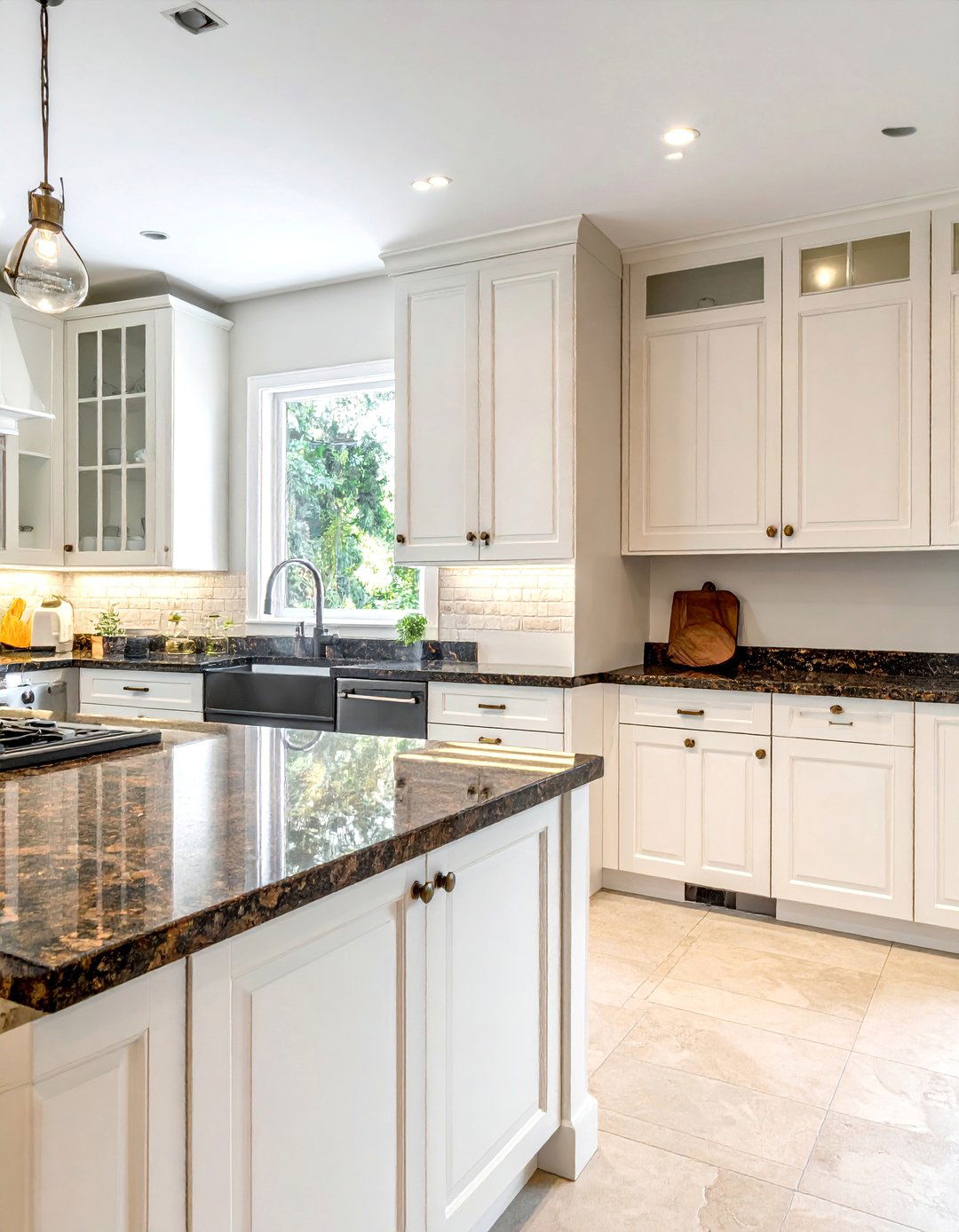
To create a timeless, traditional kitchen, pair richly patterned dark granite countertops with antique white cabinets. The creamy, slightly aged finish of the cabinets, perhaps with detailed profiling or glazing, evokes a sense of classic elegance and warmth. The dark granite, with its complex veins and mineral deposits in shades of brown, gold, or burgundy, adds a layer of luxury and natural beauty. This combination feels substantial and established, perfectly suited for a traditional design that values craftsmanship and enduring style. Ornate hardware in oil-rubbed bronze or antiqued brass can complete this sophisticated and welcoming look.
14. Industrial Style with Concrete-Look Dark Countertops
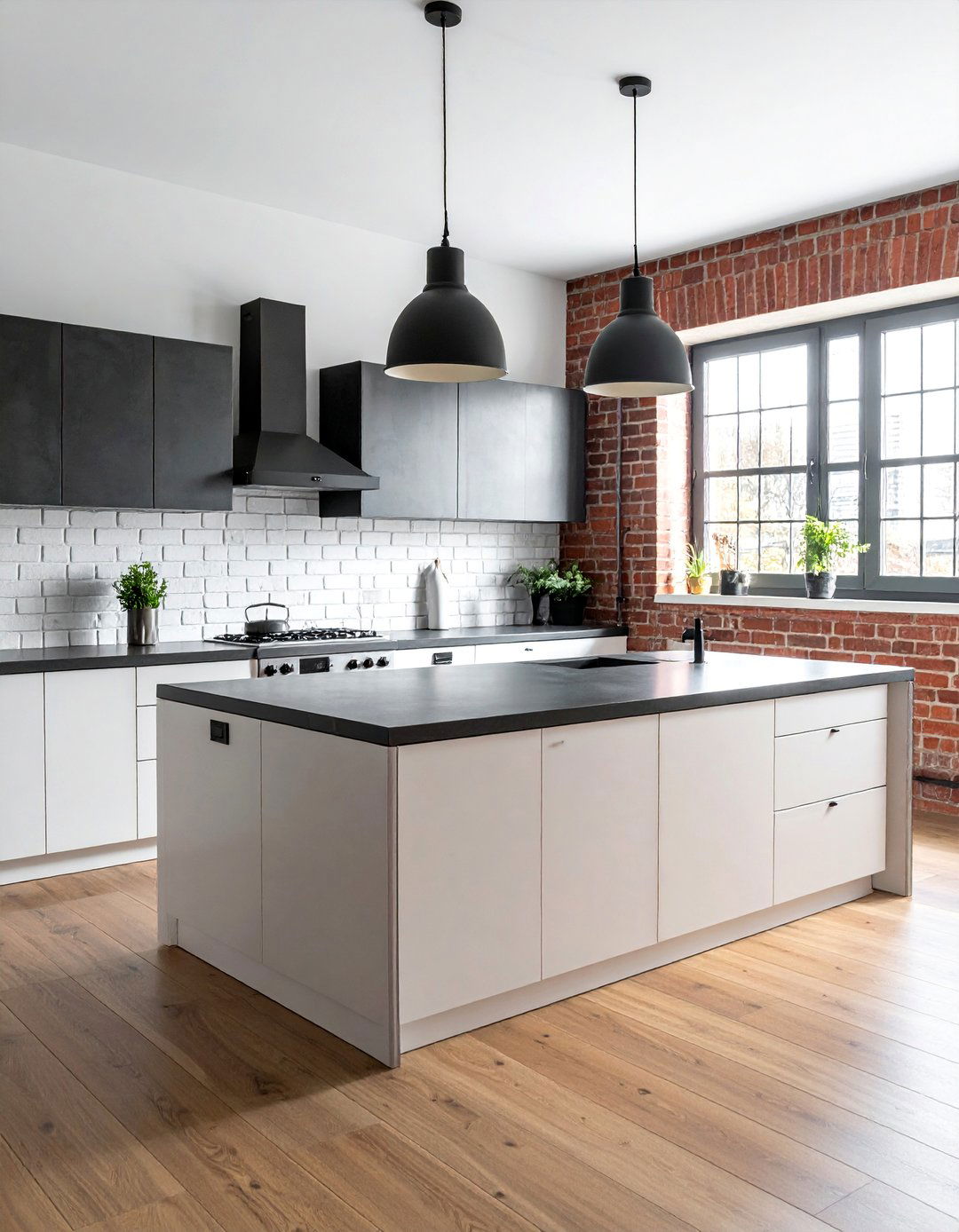
For an industrial-inspired kitchen, combine concrete-look dark gray quartz or actual concrete countertops with simple light-colored cabinets. The raw, utilitarian texture of the concrete finish provides an edgy, urban feel that contrasts effectively with smooth, unadorned white or light gray cabinetry. This pairing celebrates raw materials and functional design. To enhance the industrial vibe, incorporate elements like exposed brick, metal open shelving, and factory-style pendant lighting. The result is a space that feels both rugged and refined, blending the coolness of industrial elements with the brightness of light cabinets for a balanced and stylish aesthetic.
15. Brass Fixtures and Dark Countertops
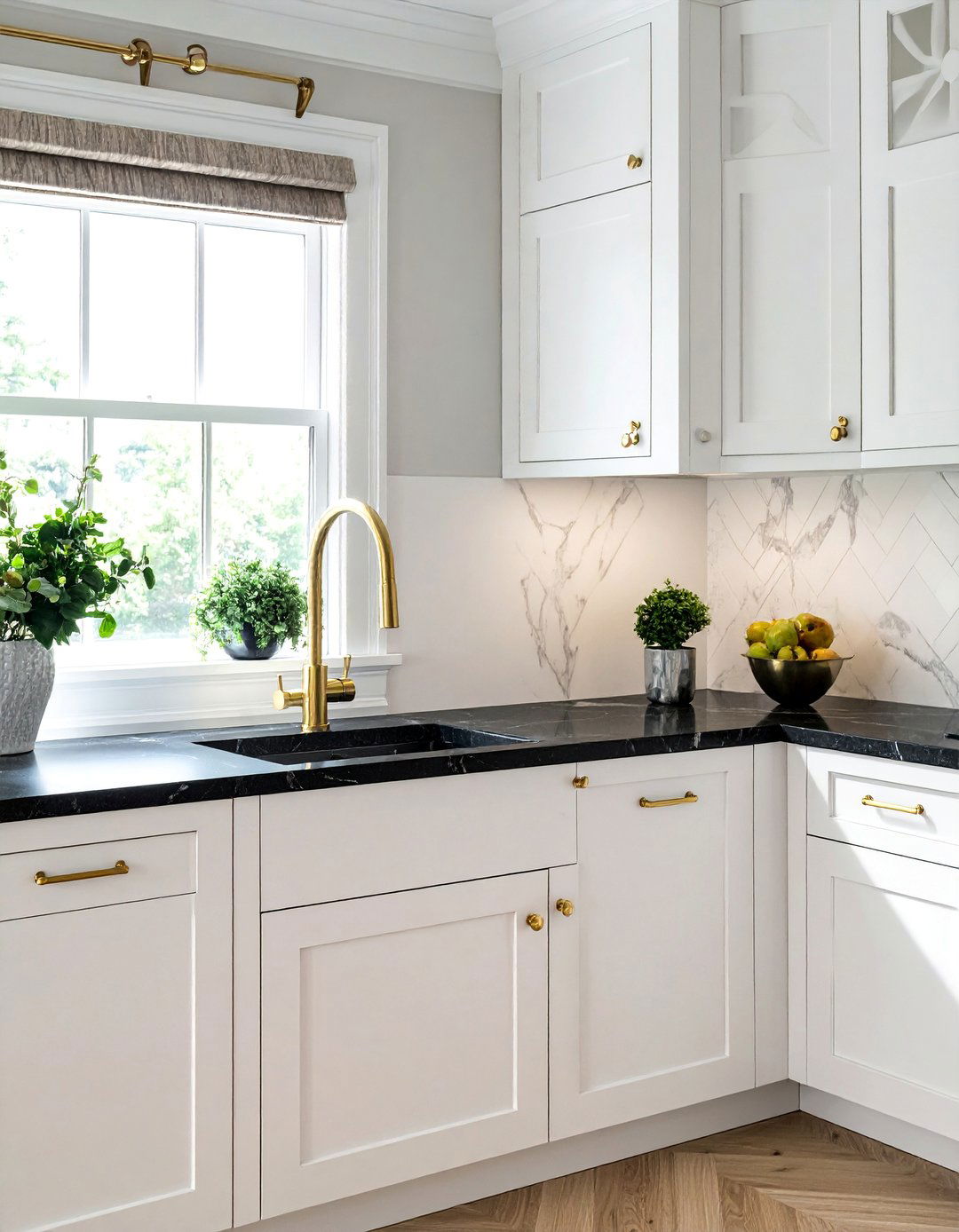
Incorporating brass fixtures, such as a gooseneck faucet or pendant lights, adds a layer of warm sophistication to a kitchen with dark countertops and light cabinets. The warm, golden tone of brushed or unlacquered brass stands out beautifully against a dark countertop surface, creating an elegant focal point. This metallic choice complements the light cabinets by adding a touch of warmth that prevents the space from feeling cold. Unlike cooler metals like chrome or nickel, brass introduces a classic, almost vintage element that feels luxurious and inviting. It ties the light and dark elements together with a glamorous, unifying touch.
16. A Classic Subway Tile Backsplash
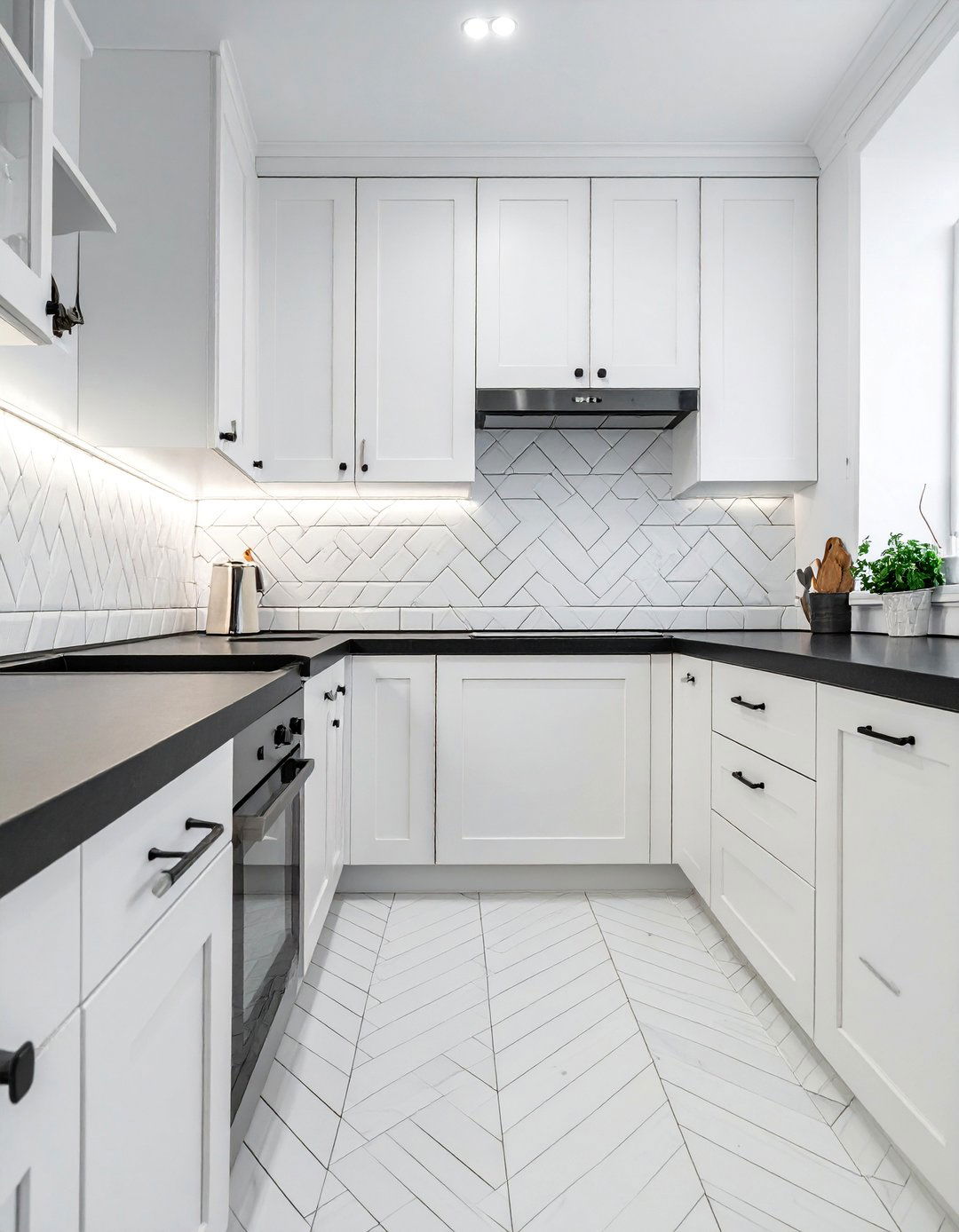
A white subway tile backsplash is a timeless and versatile choice that perfectly complements the pairing of dark countertops and light cabinets. Its clean, classic pattern provides a subtle textural backdrop without competing for attention. Using a dark grout, such as charcoal or black, with the white tiles can create a striking graphic element that ties into the dark countertops, unifying the entire design. Alternatively, a white grout offers a more seamless, bright appearance that enhances the airy feel of the light cabinets. This affordable and stylish option works well in nearly any design style, from modern farmhouse to transitional.
17. Dark Countertops with Two-Tone Cabinets
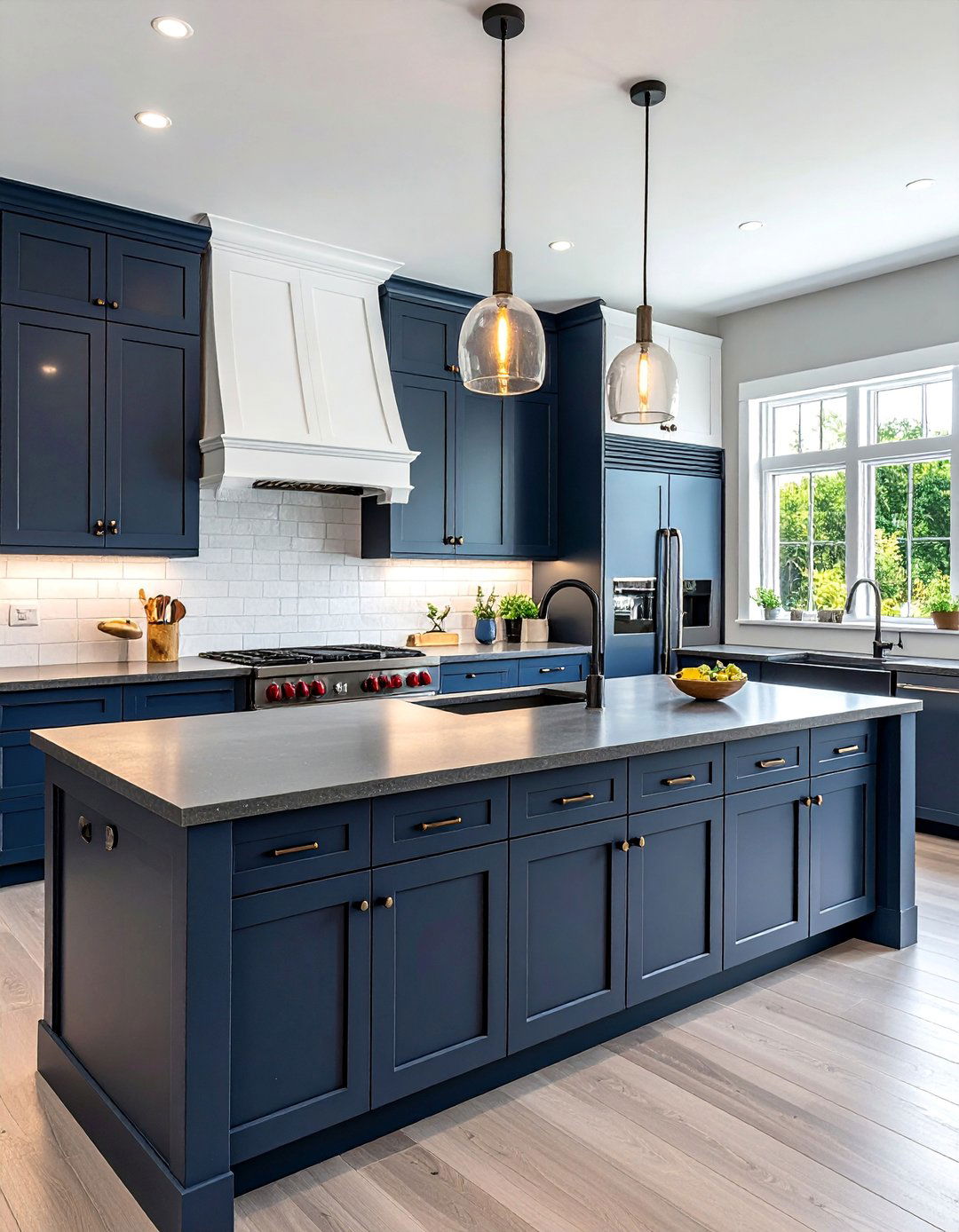
Create a dynamic and custom look by using two-tone cabinets alongside dark countertops. A popular configuration is to use light-colored upper cabinets and darker lower cabinets, topped with a continuous dark countertop. The light uppers help the room feel open and bright, while the dark base cabinets, perhaps in a navy, charcoal, or even black, ground the space and tie in directly with the countertop. This approach adds depth and dimension, offering a more curated and thoughtful design than a single cabinet color. The dark countertop unifies the look, creating a cohesive visual line around the room's perimeter.
18. Butcher Block Island with Dark Perimeter Countertops

To add warmth and a functional workspace, incorporate a butcher block island into a kitchen that features dark perimeter countertops. The natural wood of the butcher block creates a pleasing organic contrast to the sleek, hard surface of dark granite or quartz along the kitchen walls. This design choice establishes the island as a distinct zone, often used for food preparation. It softens the overall aesthetic, preventing the high-contrast scheme from feeling too severe. The combination of materials adds textural diversity and a touch of rustic or farmhouse charm, making the kitchen feel more inviting and layered while still maintaining a sophisticated look.
19. Dark Countertops and Light Cabinets in a Small Kitchen

Contrary to the belief that dark elements shrink a space, using dark countertops with light cabinets can work wonderfully in a small kitchen. The light cabinets, particularly on the upper walls, reflect light and create a sense of openness, making the room feel larger. The dark countertops ground the design and add a touch of sophisticated drama without overwhelming the space. By keeping the walls and backsplash light, you can maintain a bright, airy atmosphere while still benefiting from the visual depth that dark counters provide. This strategic use of contrast adds character and style to a compact kitchen.
20. Statement Pendant Lighting Over a Dark Countertop Island

Hanging statement pendant lights over a kitchen island with a dark countertop is a brilliant way to illuminate the workspace and create a stunning focal point. The light from the pendants will reflect off the dark surface, highlighting its color and texture while preventing it from feeling like a black hole in the center of the room. Choose fixtures that complement your design style—whether large metal domes for an industrial look, elegant glass orbs for a modern feel, or ornate lanterns for a traditional aesthetic. These lights not only provide essential task lighting but also act as decorative elements that draw the eye.
Conclusion:
The combination of dark countertops and light cabinets offers a powerful design foundation that is both timeless and adaptable. This high-contrast pairing creates visual interest and sophistication, serving as a versatile canvas for various styles, from minimalist to traditional. By thoughtfully selecting materials like granite or quartz and accenting with unique backsplashes, hardware, and lighting, you can craft a kitchen that feels balanced, bright, and uniquely yours. This classic duo proves that strategic contrast is key to creating a space that is both dramatic and welcoming, ensuring enduring appeal for years to come.

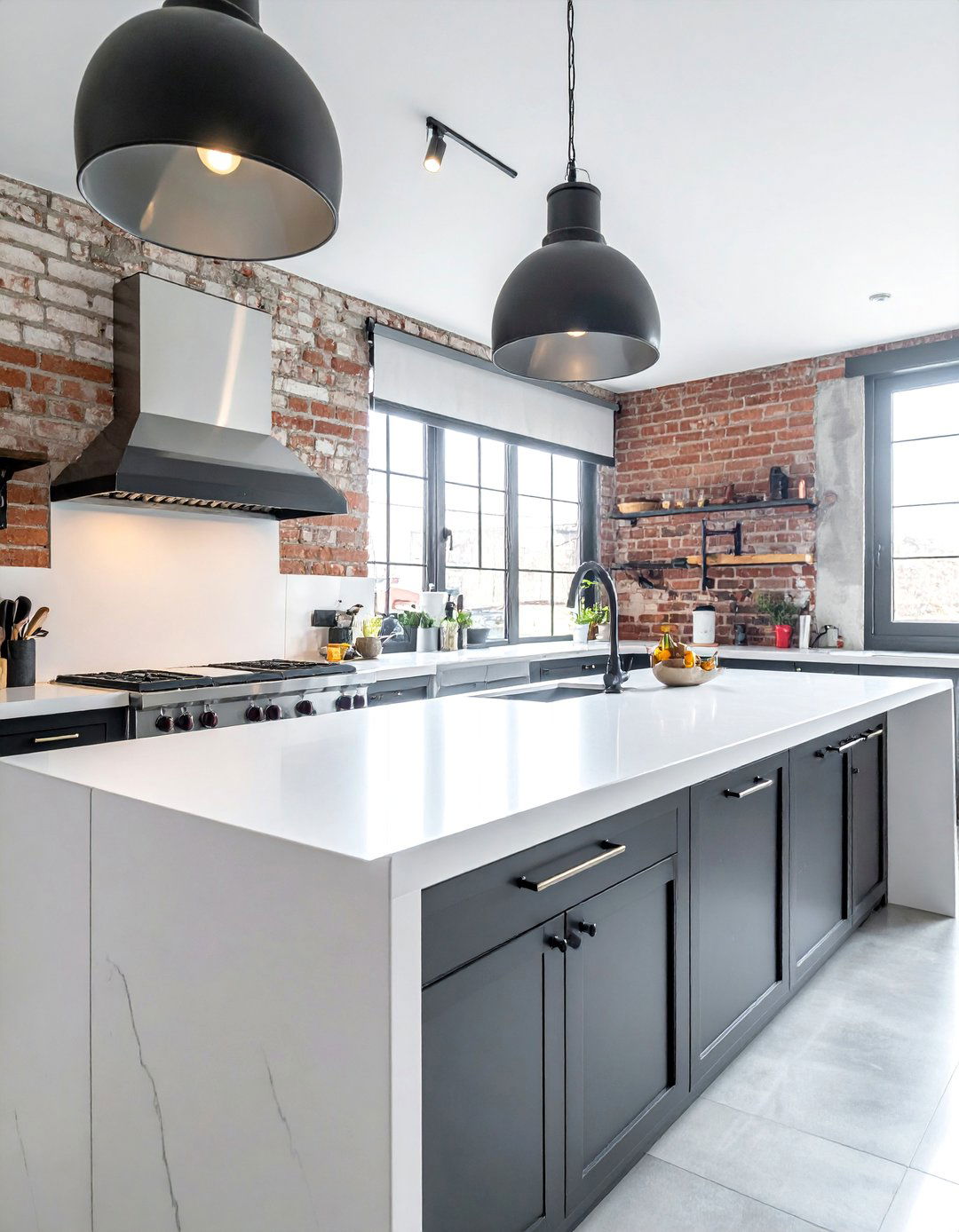
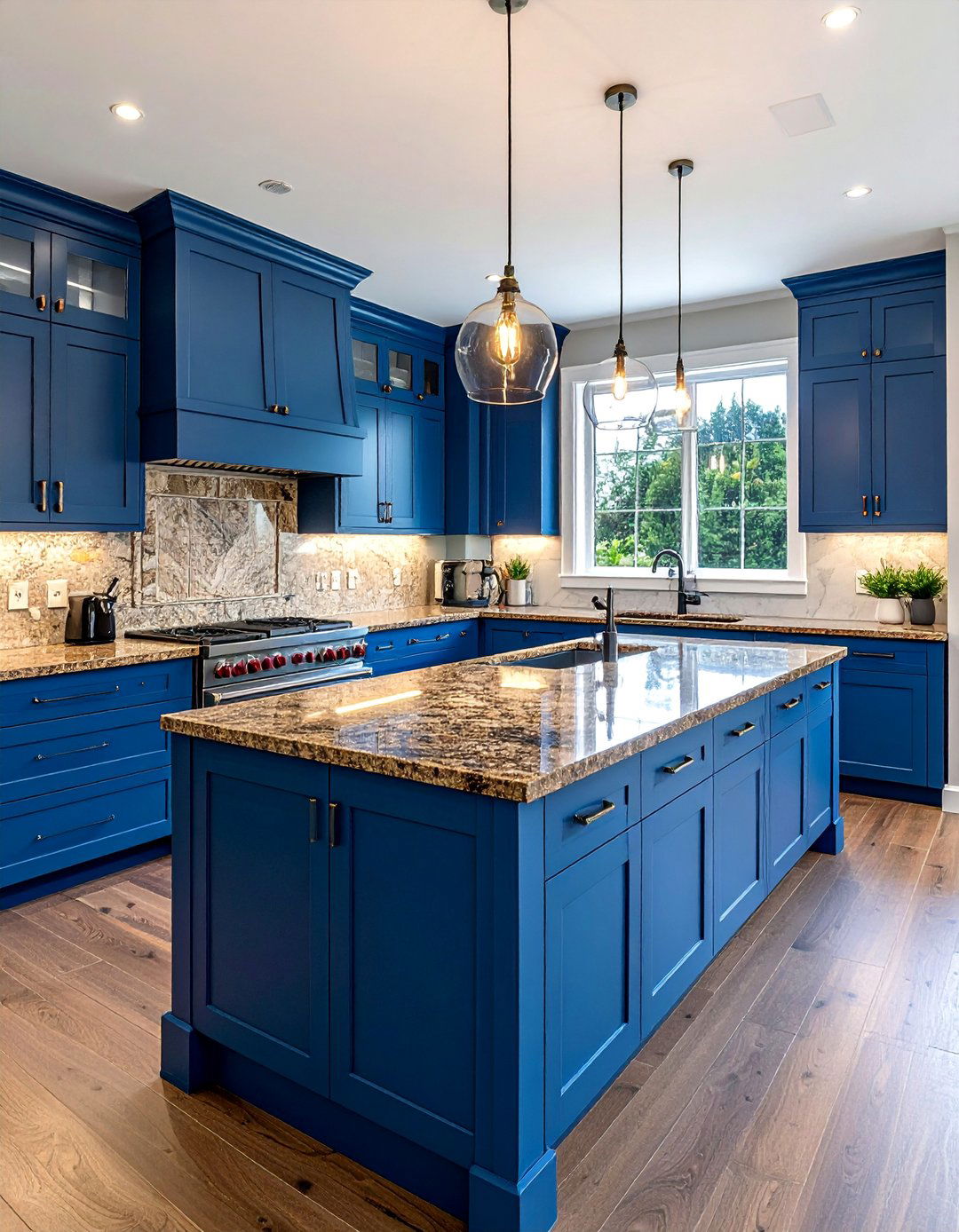
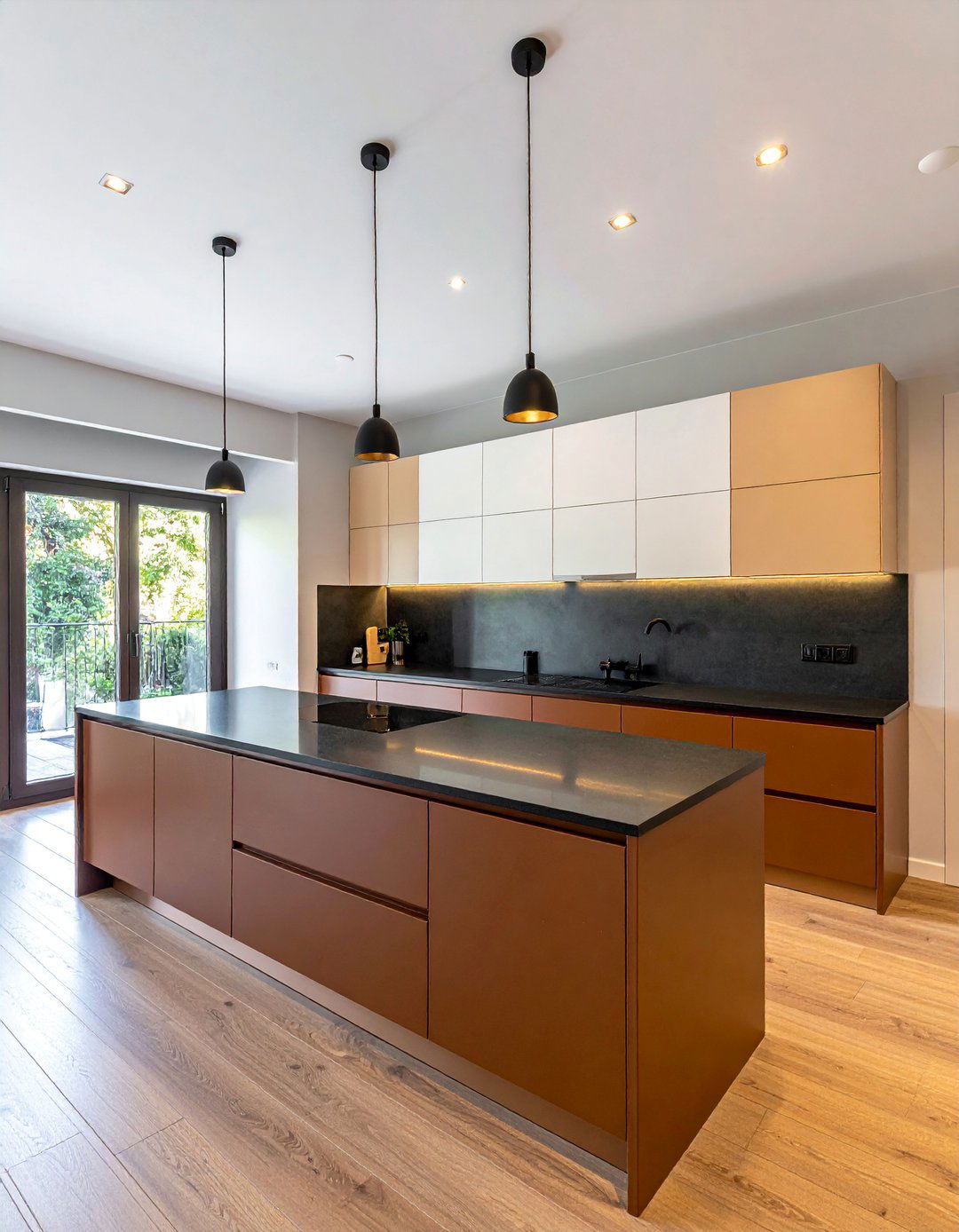

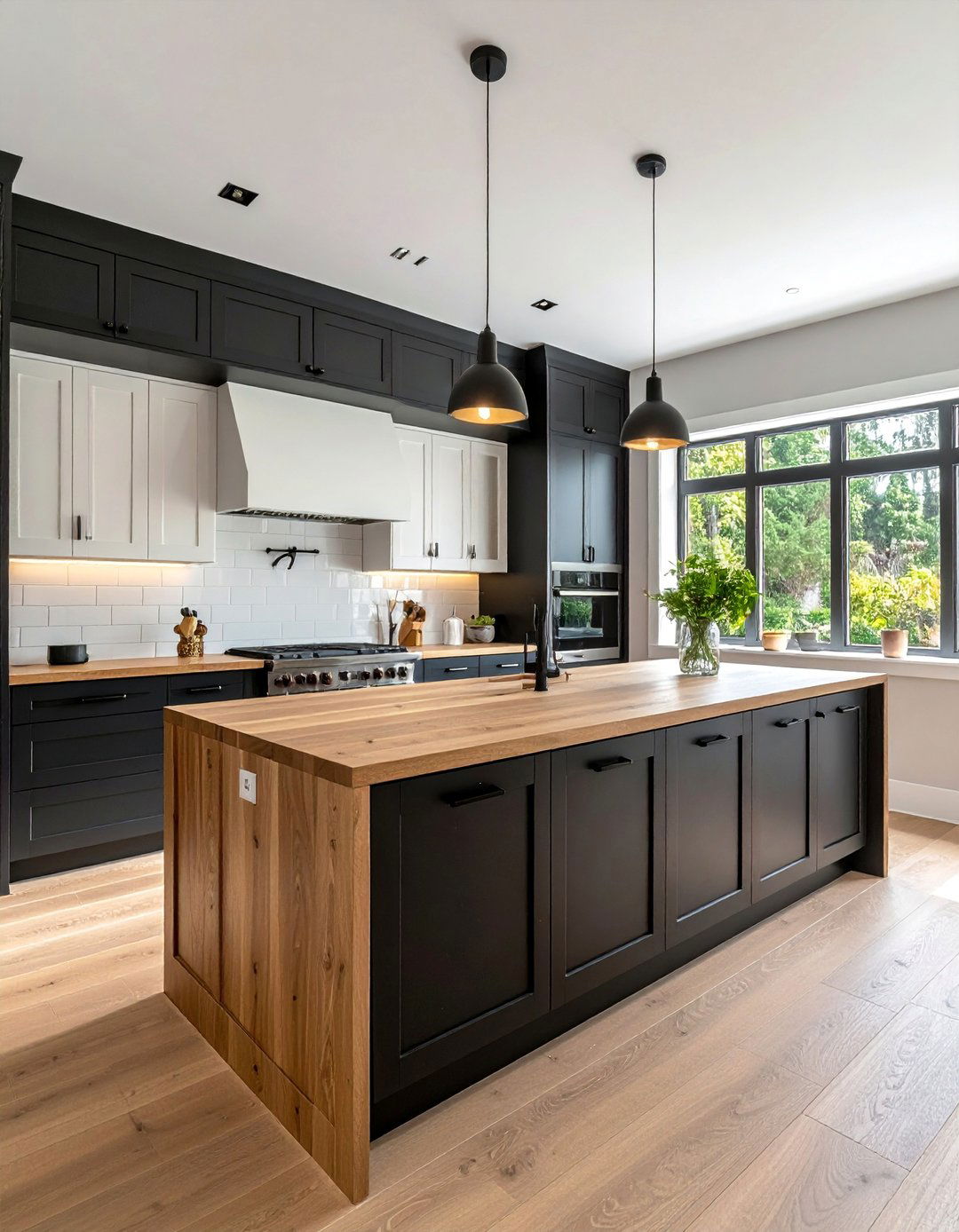
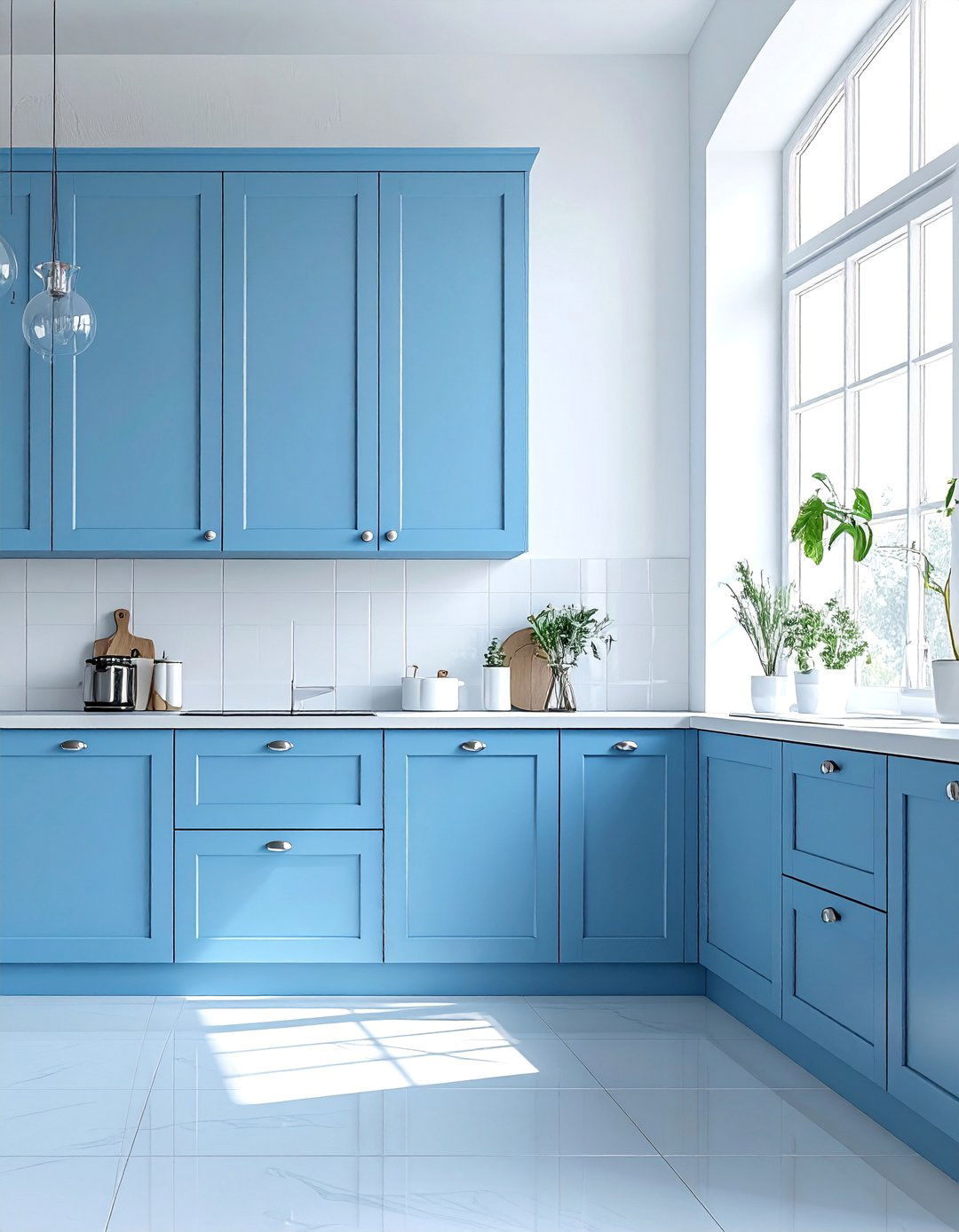
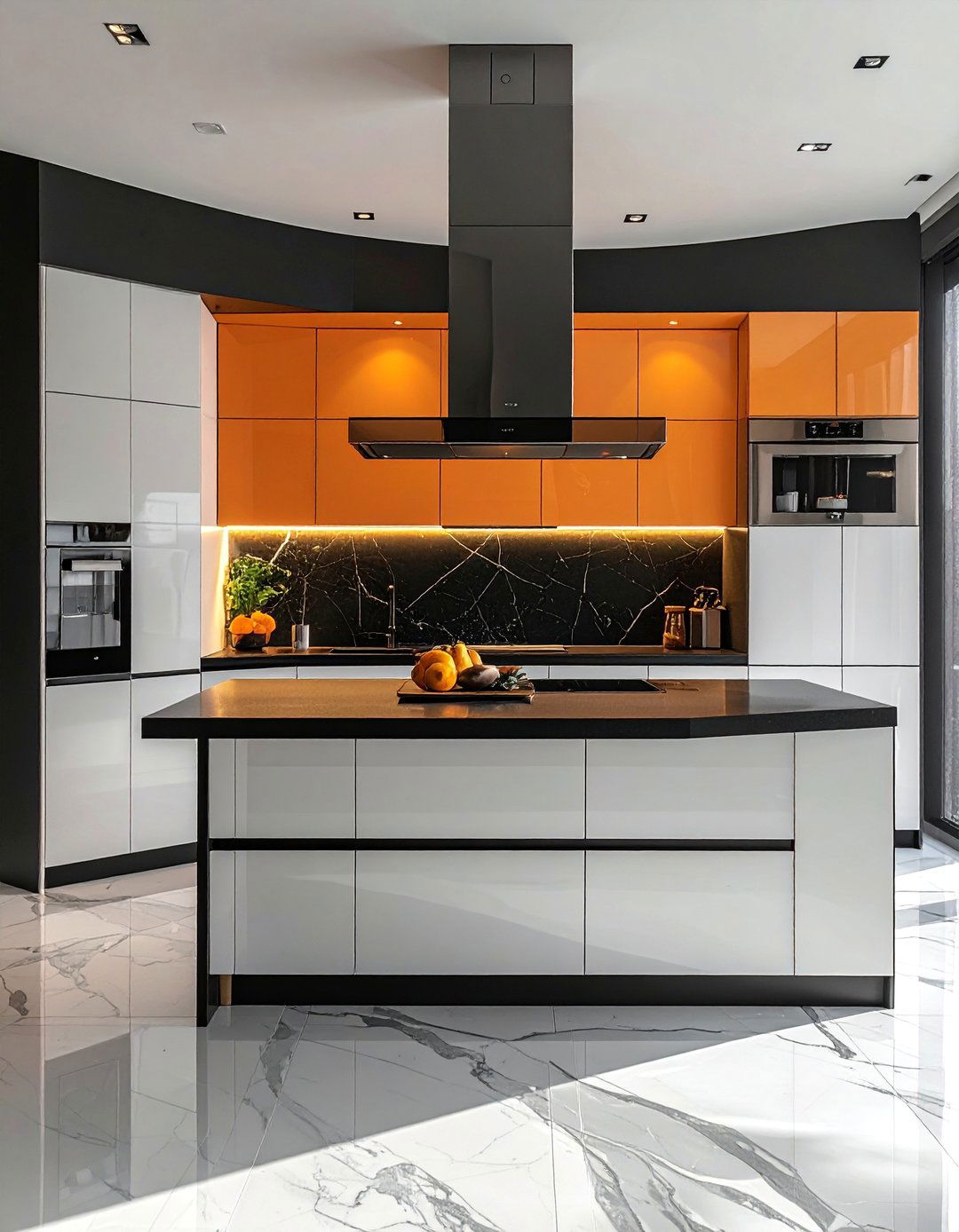
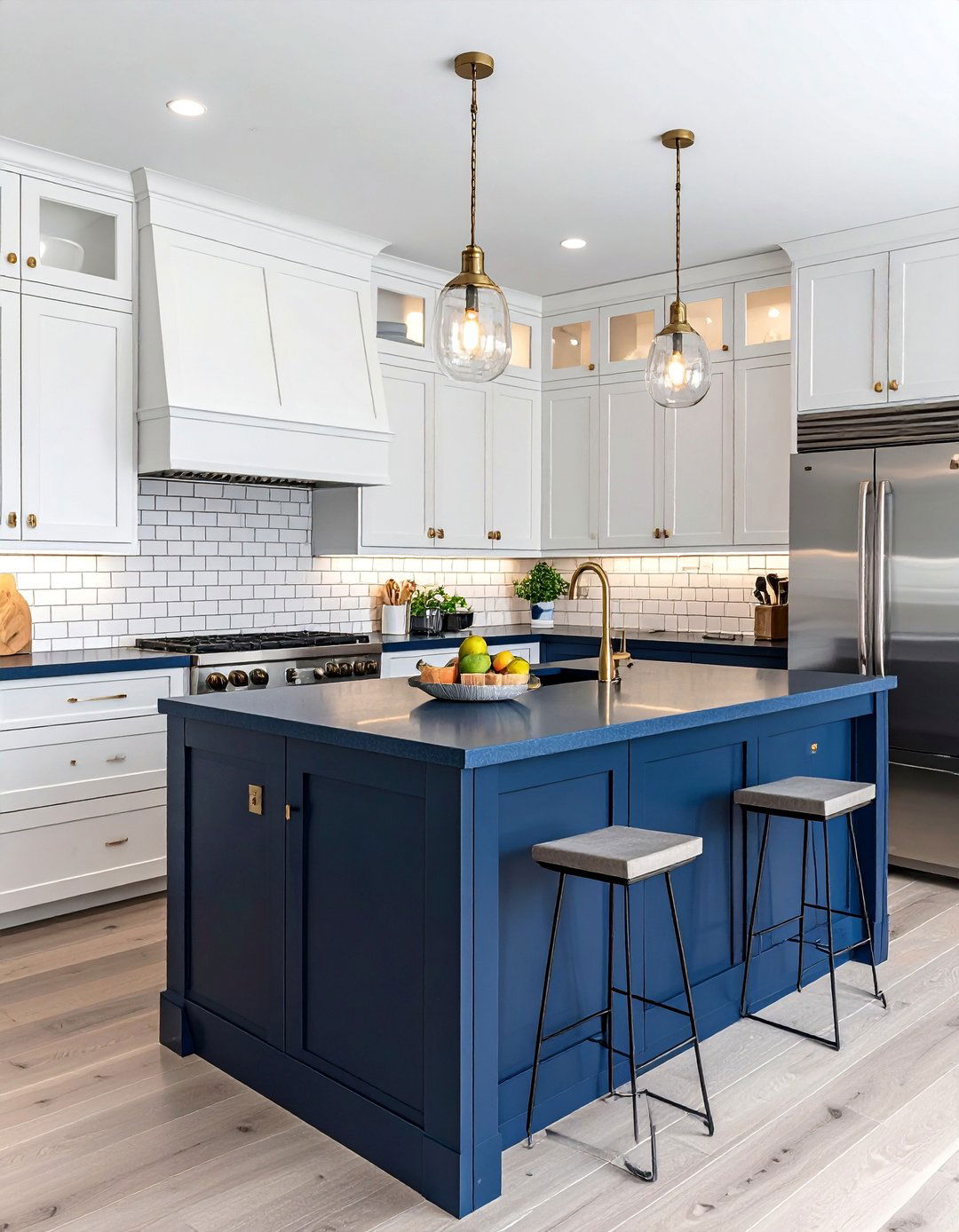
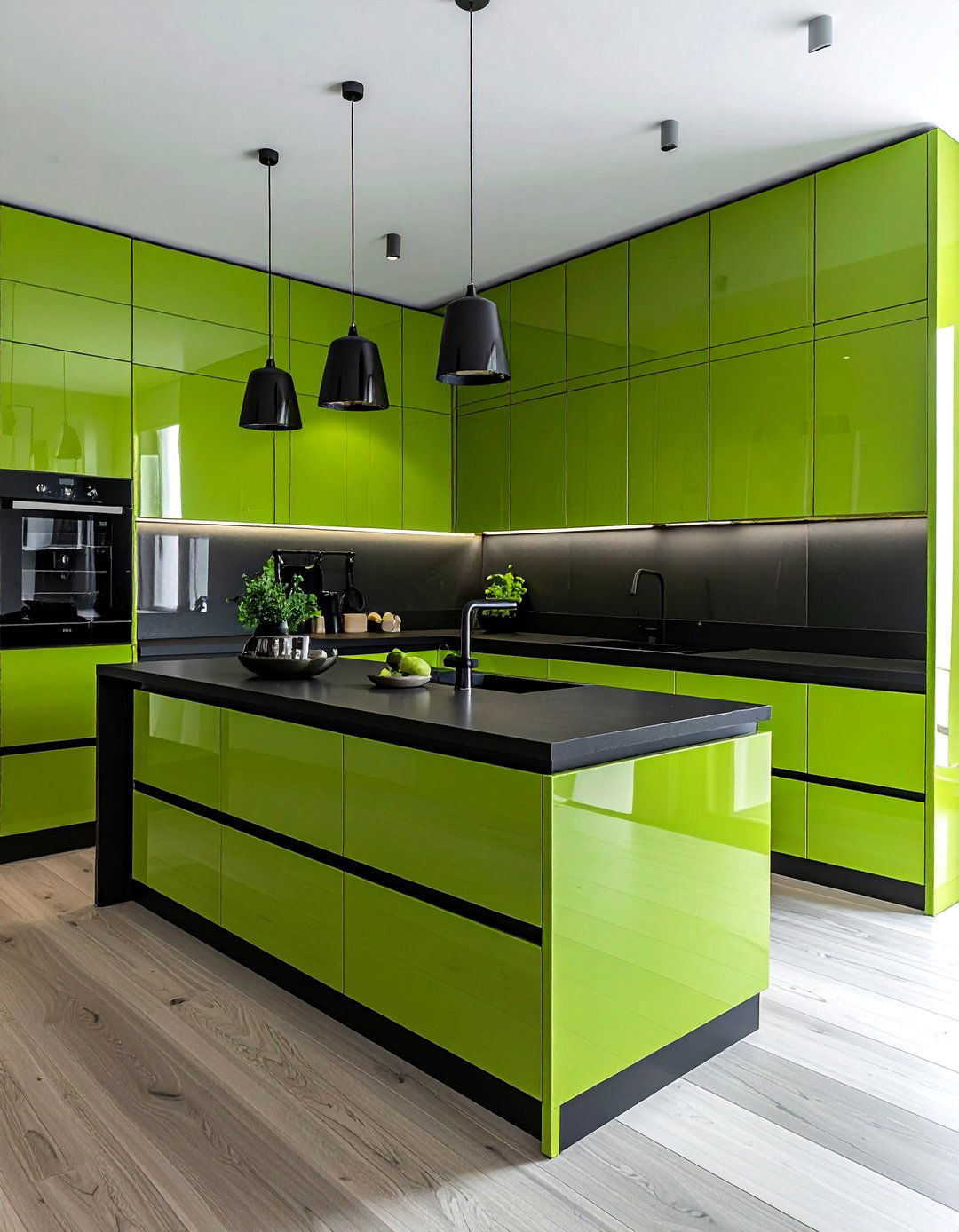
Leave a Reply